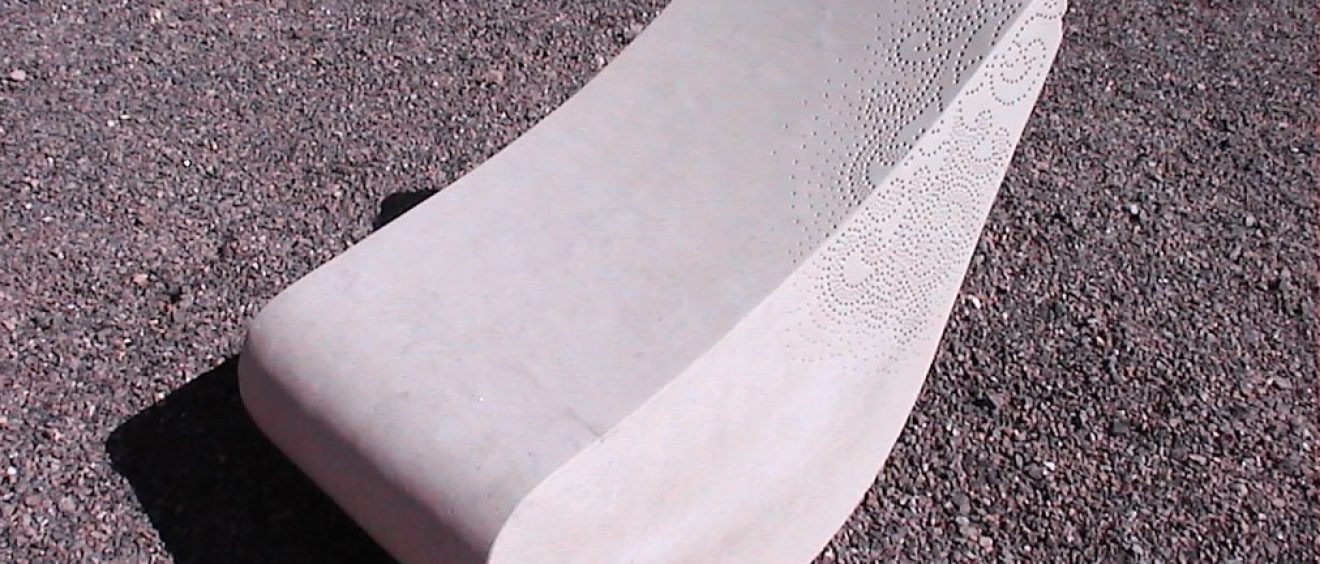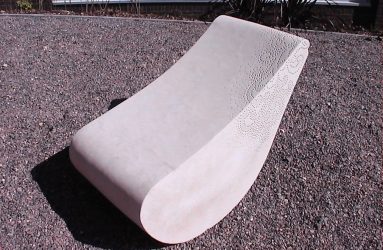
Design 3D – KS3 art & design
Title: Drift
Artist: : Peter Yarwood
Location: Outside courtyard, Level 2, PFI building
Material: Limestone
Installed: 2006
Background
In 2006 Peter Yarwood, Bristol artist, was commissioned to create 3 stone seats for the outside courtyard at Salisbury Hospital.Other public artwork and benches by Peter can be seen in Sheffield, Chesterfield and Bristol. Positioned along the pathway leading to the open courtyard, Peter’s resting forms compliment the stone benches carved by Zöe Cull and Alex Evans. They tie in with the meandering landscape design and, along with the other stone objects in the courtyard, are reminiscent of erratic boulders.
Peter Yarwood’s resting forms bear a relation to objects carried and deposited by a river’s flow, which have settled and started to take root. With delicate patterning the pieces are sensuous, evocative and tactile. Resting on them your hands can explore the surface making a direct connection with the river imagery through touch.
“I like the idea of only partially revealing things, leaving the viewer to fill in the gaps over several viewings, prolonging the dialogue between view and the work.” Peter Yarwood
Images
Discussion points
- Look at the shape of the forms created by Peter Yarwood.
- Consider how much of the shapes touch the ground. Does this make them weightless or grounded?
- How is the weight of each stone balanced?
- Peter used washed pebbles as his influence. How has this been translated into the work?
- What practical elements would effect the way an artist would design a seat?
- These works were designed to be sculptural and seats – Do you consider them successful as both?
- How does the surface design add to the overall concept?
Practical activities
- Look at other artists work that use natural imagery to create abstract shapes in the landscape, for example Richard Long
- Collect some natural objects: shells, pine cones, pebbles, leaves, stones, lichen and twigs
- Choose one object and make drawings that consider its shape and weight.
- Also look at different surface textures. Try using wax crayons to make rubbings of your objects
- Using your drawings and texture rubbings create an abstract picture or 3D model
- How can these shapes by developed into a design for outdoor seating?
- Present your ideas to your class to discuss design issues
Links
Compare these stone seats with the 3 River benches by Zoë Cull & Alex Evans. Also look at Ivy Smith’s ‘Swimmers’ on the level 4 corridor. Consider these works alongside themes of abstraction, representation and materials.




